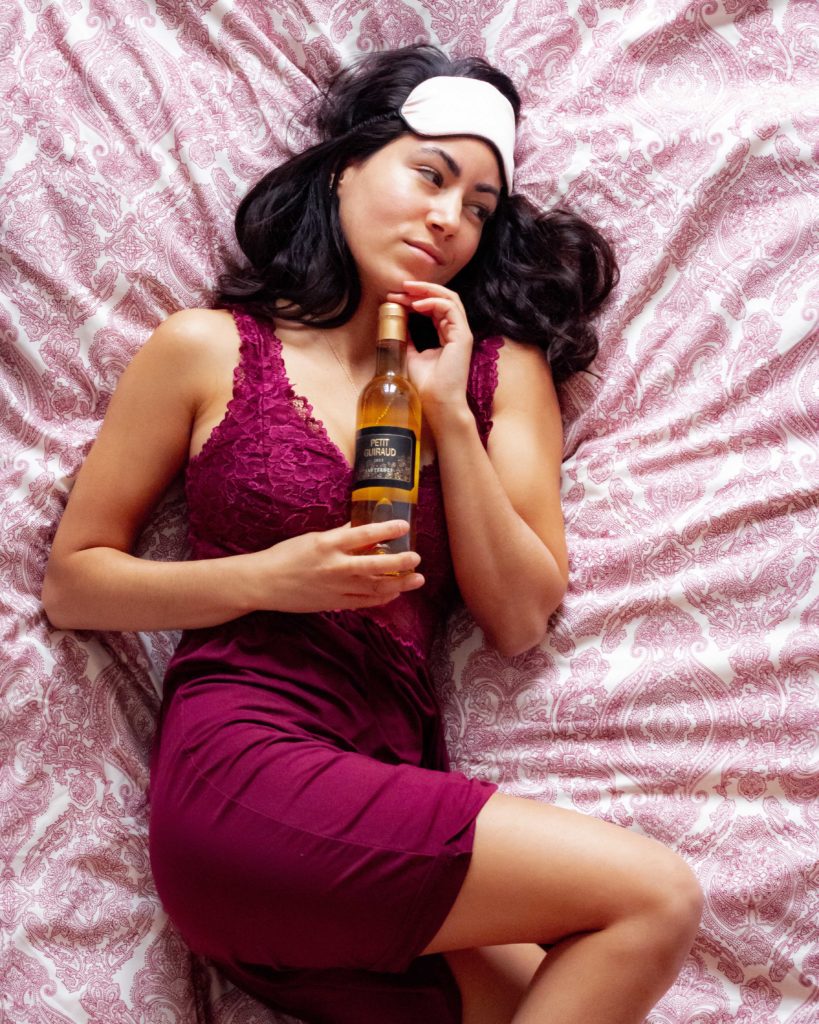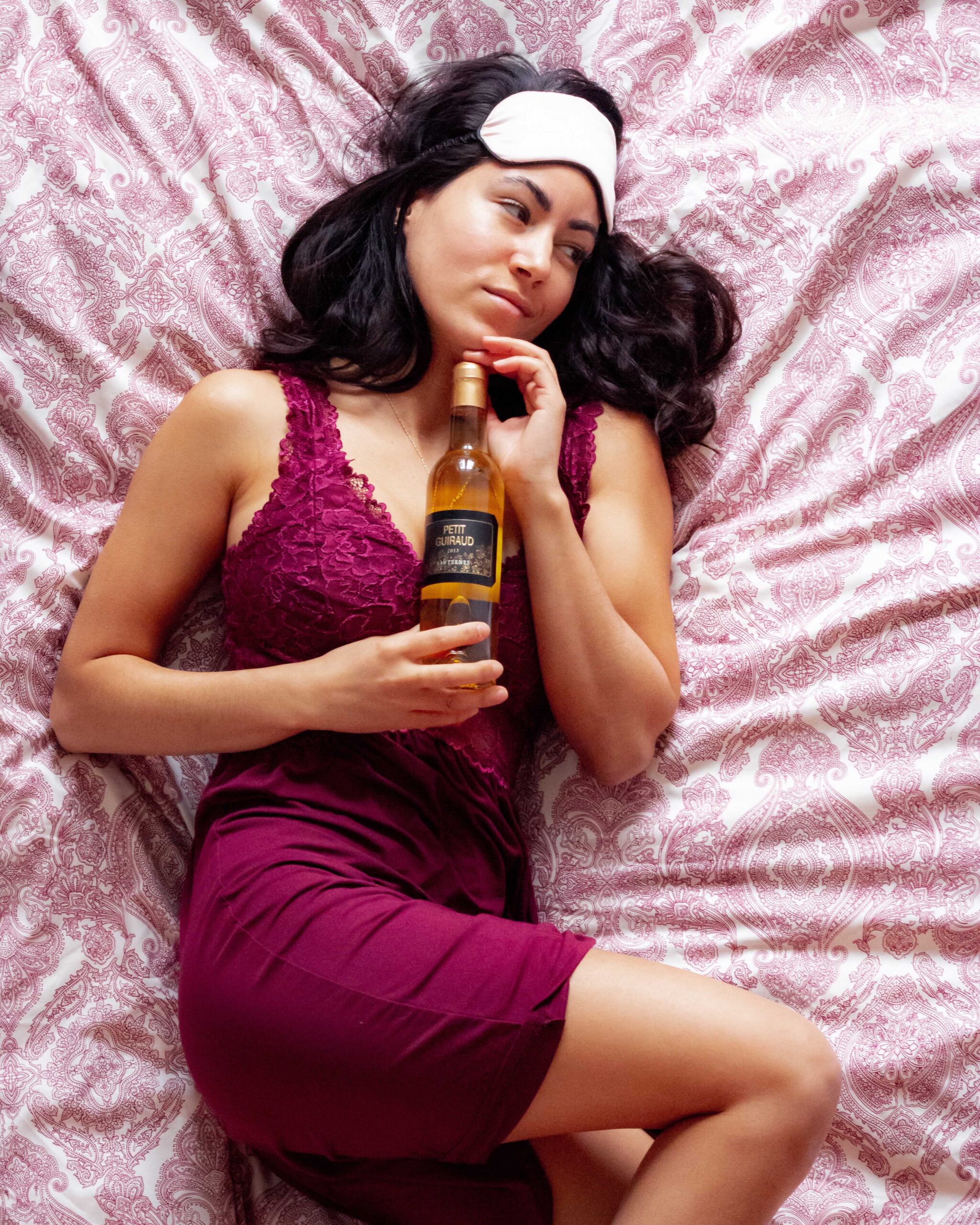
This week I’m laying in bed with nothing less than a bottle of Petit Giraud Sauternes 2013, the second wine of the famous Château Guiraud. Extra special is that I bought this bottle myself a few years ago at the winery during my visit to Bordeaux.
Ecological and biodynamic Sauternes
The wines of Guiraud appeal to me so much because of the fantastic work philosophy of this winery. The vineyards are completely ecological and the wines biodynamic. Xavier Planty, the winemaker and co-owner started working this way back in 1996! Real pioneers. In 2011 they were the first Grand Cru Classé in Bordeaux certified as organic.
I remember very well that when visiting this château I was impressed by the insect hotel that was displayed to show the visitors the diversity of what is crawling around in the soil. 635 different species of insects and spiders. Chapeau! As long as it all stays in the ground, I’m happy.
Chateau Guiraud – Great Sauternes
The wines of Château Guiraud are made from 65% Semillon and 35% Sauvignon Blanc, the vines are around 40 years old. The soil of the vineyards consists of 80% sandy gravel and 20% clay gravel.
The harvest here often lasts the whole month of September because the grapes are picked in several rounds, which is very common in Sauternes.
What do we get in return? A complex sweet wine that is not too sweet at all due to its beautiful fresh acidity. This makes it easy to combine with sweet and savory dishes.
Read all about Château Guiraud here!
Sauternes
Sauternes is located all the way in the South of Bordeaux and is a special region because, unlike the rest of Bordeaux, sweet wines are produced here and I’m not talking about your sweet white wine with ice, which I hope you don’t drink at all, but that’s another discussion. The grapes grown in this region are Semillon, Sauvignon blanc and Muscadelle.
The sweet wines from Sauternes originate from a very special fungus called Botrytis Cinerea. Wait what? I’ll explain it the easy way.
What is noble rot
Imagine, you’re a nice little grape and you’re hanging on a vine. That vine is in a vineyard and that vineyard is located in Sauternes, the south of Bordeaux. There happens to be a small river, called Ciron. When the sun goes down that river creates a lot of humidity in the vineyard. A thick fog hangs around you, as if someone is smoking a big fat spliff. You can’t see a thing and you get a bit damp yourself. It even makes you rot. Oh oh! Don’t worry, the sun is coming up, and it’s still pretty hot in autumn! Because of the warm sun you don’t turn into a rotten berry, but rather into a soft and squishy raisin.
This fungus in combination with the sun has caused the moisture inside the grapes to evaporate but the sugars and aromas have remained. I think now it’s easy to imagine how a Sauternes wine becomes so sweet. Then the question why is Sauternes so expensive? This is mainly because the growing of Botrytis Cinerea in a grape is not self-evident, that’s why it is not just a simple fungus, hence the name “noble rot”. In addition, the process of developing the fungus and the ripening of the grapes does not take place at the same time for every grape, which means that the harvest sometimes has to take place in nine different rounds. You understand, that’s an exciting process.
I am totally in the mood for a glass now!

